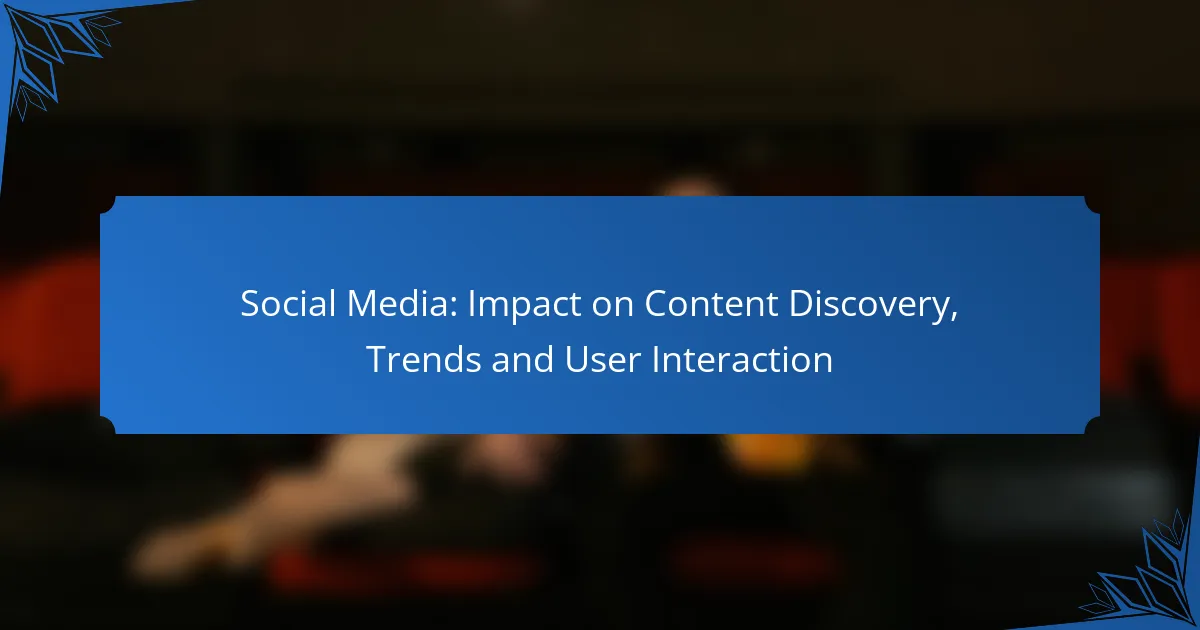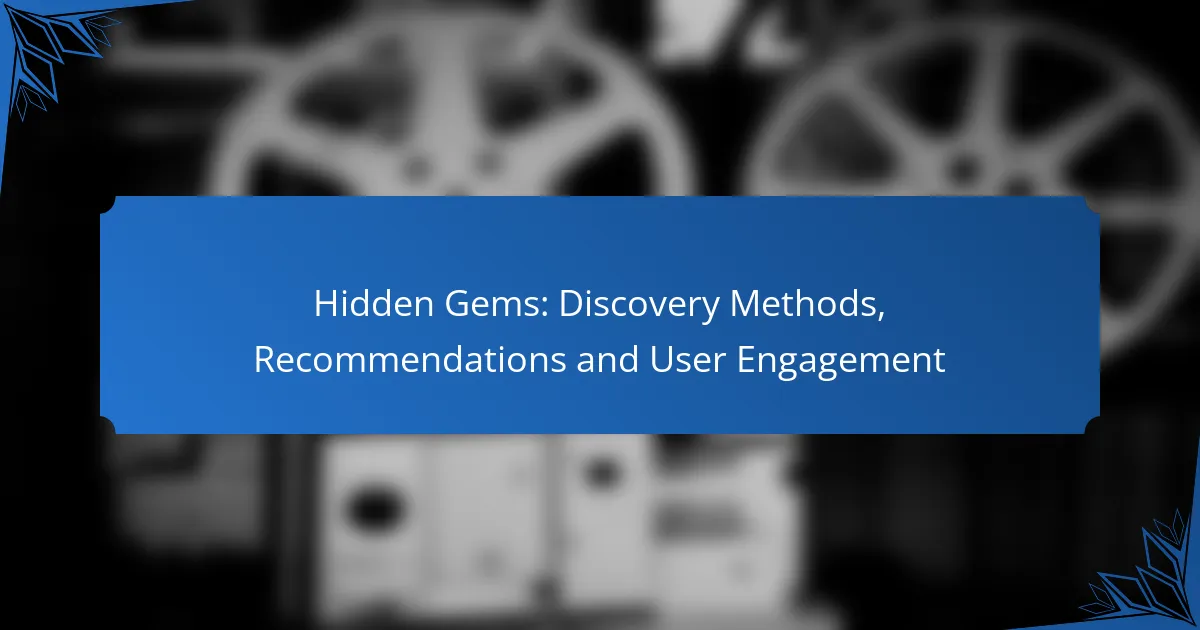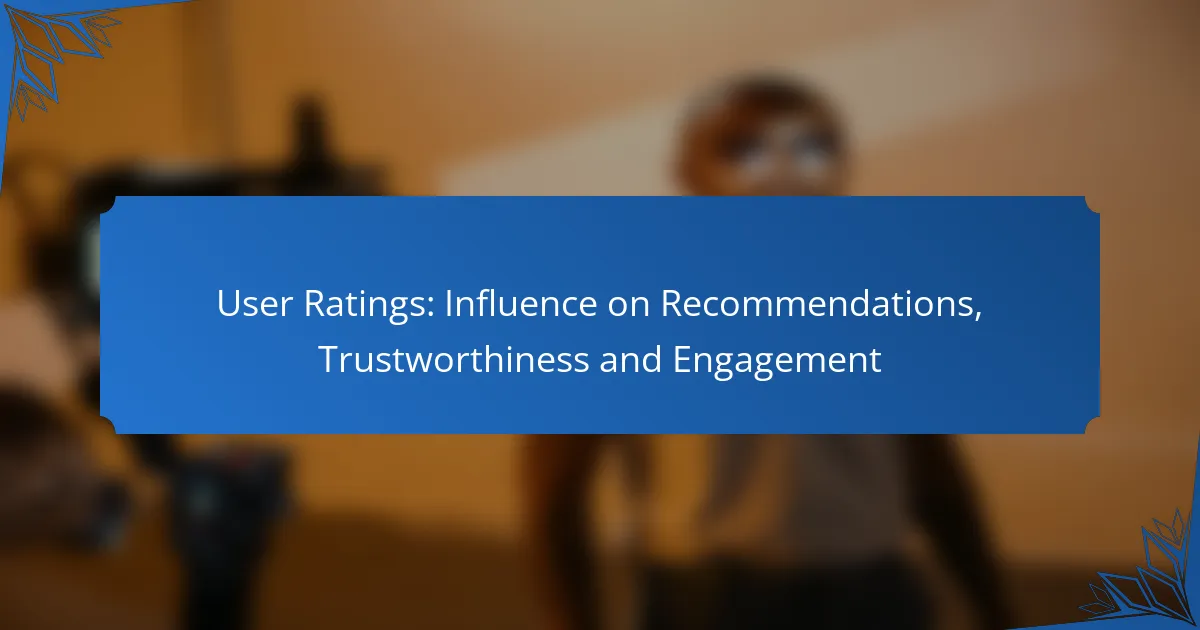Social media plays a pivotal role in content discovery by utilizing advanced algorithms and promoting user-generated content, which enhances visibility and engagement. As trends evolve, platforms increasingly favor engaging formats like short-form videos and interactive posts, fostering deeper user interaction. This dynamic environment allows users to connect with a diverse array of information while shaping the visibility of content through their engagement actions.
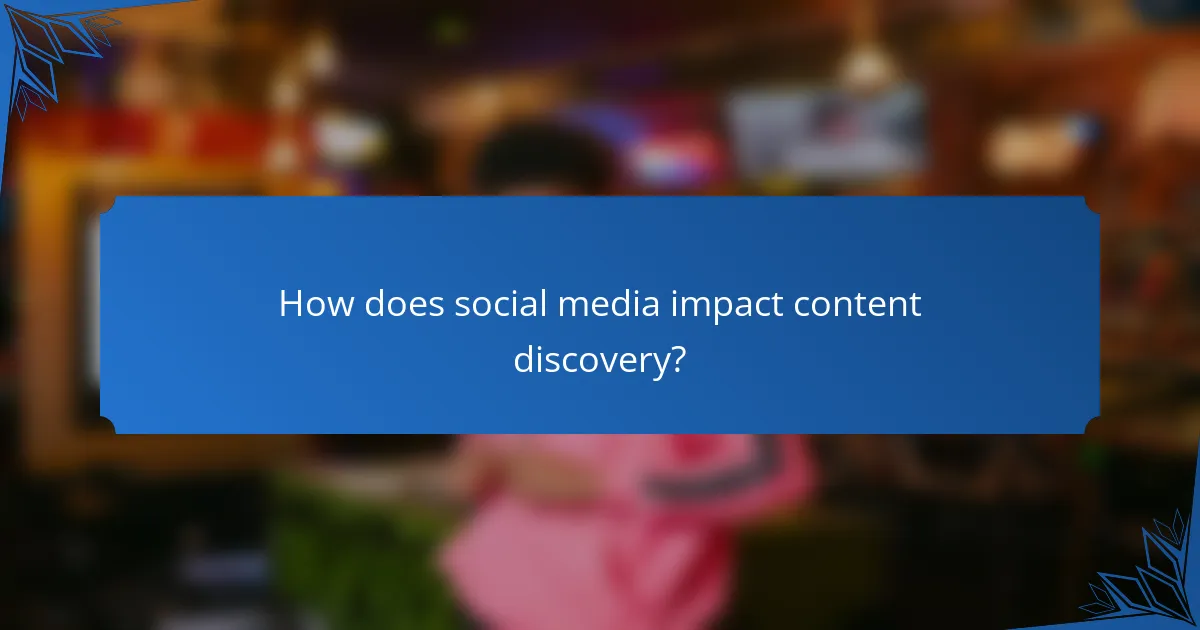
How does social media impact content discovery?
Social media significantly enhances content discovery by leveraging algorithms, promoting user-generated content, and facilitating influencer marketing. These factors collectively increase the visibility of various content types, allowing users to engage with a broader range of information and trends.
Increased visibility through algorithms
Social media platforms use sophisticated algorithms to curate and display content tailored to individual user preferences. This personalized approach means that users are more likely to encounter relevant content, increasing the chances of discovery. For instance, platforms like Facebook and Instagram prioritize posts that align with users’ past interactions, making it essential for content creators to engage their audience effectively.
To optimize visibility, consider using trending hashtags and engaging with followers regularly. This interaction signals to algorithms that your content is relevant, potentially boosting its reach. However, relying solely on algorithmic visibility can be risky, as changes in algorithms can drastically affect content exposure.
User-generated content promotion
User-generated content (UGC) plays a crucial role in content discovery on social media. When users share their own experiences or creations, it fosters community engagement and trust. Brands that encourage UGC often see increased visibility as their followers share authentic content with their networks, amplifying reach.
To effectively promote UGC, brands can run contests or campaigns that incentivize users to create and share content related to their products. This strategy not only enhances brand visibility but also builds a sense of community among users, which can lead to higher engagement rates.
Influencer marketing effectiveness
Influencer marketing leverages the reach and credibility of social media personalities to enhance content discovery. Influencers can introduce brands to their followers, often resulting in increased engagement and visibility for the promoted content. This method is particularly effective when influencers align with the brand’s values and target audience.
When considering influencer partnerships, focus on micro-influencers who typically have higher engagement rates and more niche audiences. Establish clear goals for the collaboration, such as increasing brand awareness or driving traffic to a website, to measure the effectiveness of the campaign. Avoid partnerships that do not resonate with your brand, as mismatched collaborations can lead to negative perceptions among potential customers.
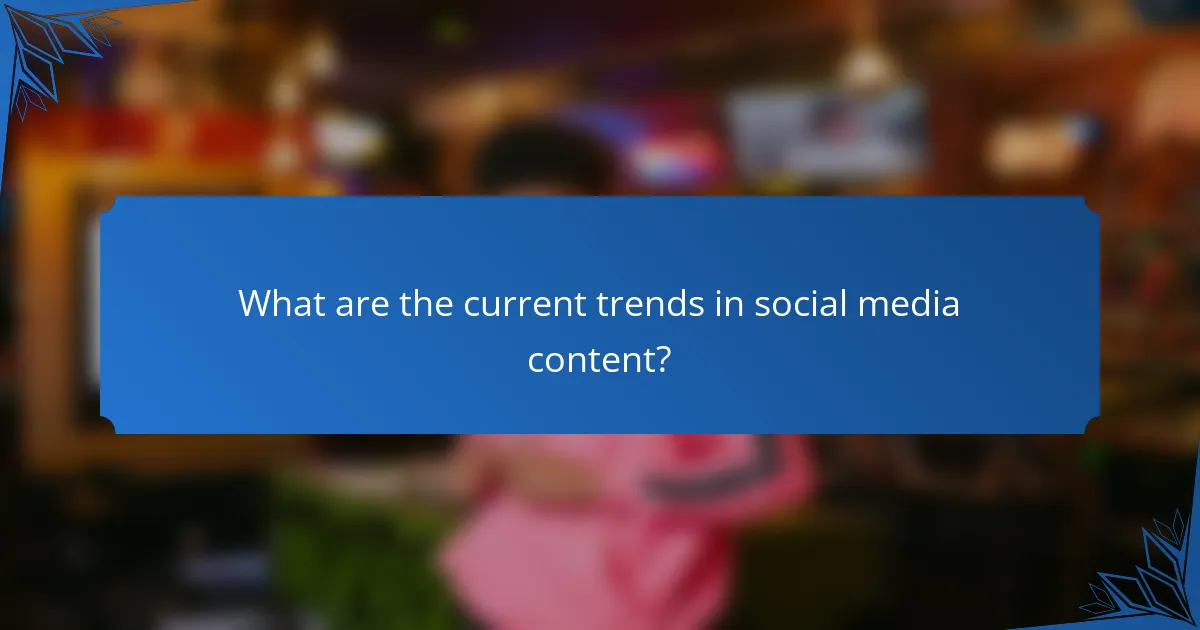
What are the current trends in social media content?
Current trends in social media content reflect a shift towards engaging formats that capture user attention quickly and interactively. Short-form videos, ephemeral content, and interactive formats are leading the way in enhancing user interaction and content discovery.
Short-form video popularity
Short-form videos have surged in popularity across platforms like TikTok, Instagram Reels, and YouTube Shorts. These videos, typically lasting from a few seconds to a couple of minutes, cater to users’ decreasing attention spans and provide quick entertainment or information.
Brands and creators are leveraging this trend by producing concise, engaging content that resonates with their audience. To maximize impact, focus on storytelling, strong visuals, and a clear call to action within the first few seconds of the video.
Ephemeral content engagement
Ephemeral content, which includes posts that disappear after a set period, such as Instagram Stories and Snapchat Snaps, has become a key engagement tool. This format encourages users to interact quickly, fostering a sense of urgency and exclusivity.
To effectively use ephemeral content, consider sharing behind-the-scenes glimpses, limited-time offers, or interactive polls. Keep in mind that the fleeting nature of this content can enhance user engagement but requires consistent updates to maintain visibility.
Interactive content formats
Interactive content formats, such as quizzes, polls, and augmented reality experiences, are gaining traction as they encourage active participation from users. This type of content not only boosts engagement but also provides valuable insights into audience preferences and behaviors.
When creating interactive content, ensure it aligns with your brand message and is easy to share. Incorporate elements that prompt user feedback or participation, enhancing the overall experience and fostering community interaction.
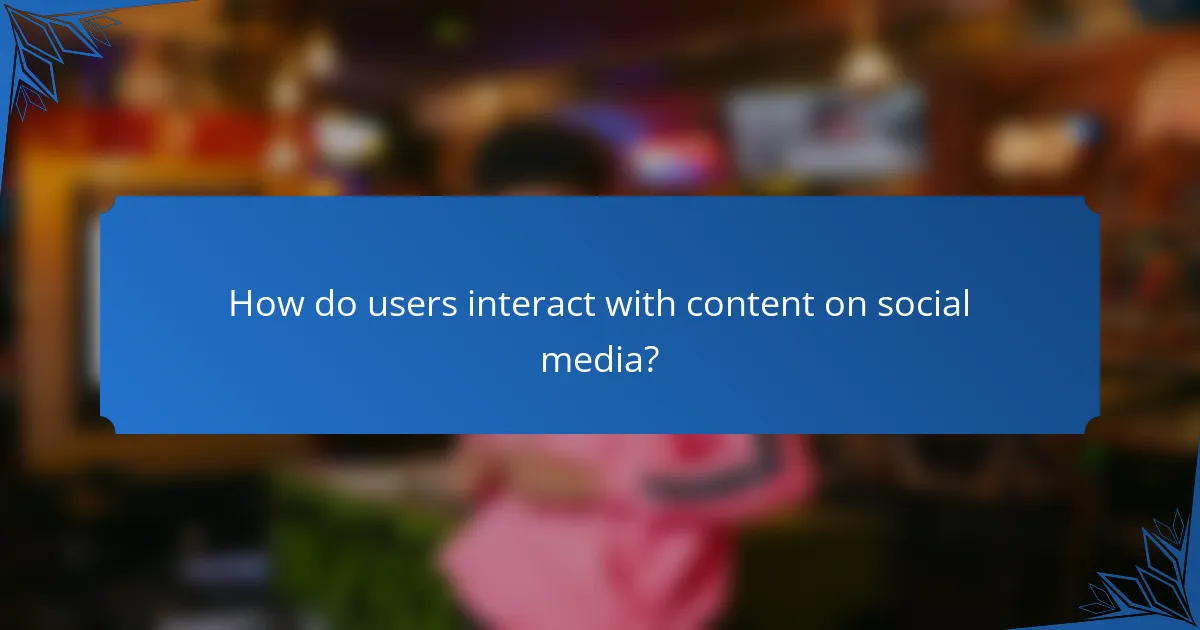
How do users interact with content on social media?
Users interact with content on social media primarily through engagement actions such as likes, comments, and shares. These interactions not only reflect user preferences but also influence content visibility and trends across platforms.
Engagement metrics analysis
Engagement metrics are crucial for understanding how users interact with content on social media. Common metrics include likes, shares, comments, and click-through rates. Analyzing these metrics helps identify which types of content resonate most with the audience.
For instance, a post with a high number of shares may indicate that the content is particularly relatable or valuable. Marketers often track these metrics over time to refine their strategies and improve future content performance.
Comment and share behaviors
Comment and share behaviors are key indicators of user engagement on social media. Users often comment to express opinions, ask questions, or engage in discussions, while sharing allows them to spread content to their own networks. This sharing behavior can amplify reach significantly.
To encourage comments and shares, content creators should ask open-ended questions or create shareable graphics. However, it’s essential to avoid overwhelming users with excessive calls to action, as this can lead to disengagement.
Impact of social listening
Social listening involves monitoring social media channels for mentions of a brand, product, or relevant topics. This practice provides insights into user sentiment and emerging trends, allowing brands to adapt their content strategies accordingly.
By analyzing conversations and feedback, businesses can identify what users are interested in and tailor their content to meet those needs. Effective social listening can lead to improved engagement and stronger relationships with the audience.

What are the best practices for leveraging social media for content discovery?
To effectively leverage social media for content discovery, focus on understanding platform algorithms, creating engaging content, and using hashtags strategically. These practices enhance visibility and encourage user interaction, ultimately driving more traffic to your content.
Optimizing for platform algorithms
Each social media platform has its own algorithm that determines what content is shown to users. To optimize for these algorithms, prioritize high-quality content that encourages engagement, such as likes, shares, and comments. Regularly posting at peak times can also improve visibility.
Consider analyzing your audience’s behavior to identify when they are most active. Tools like Facebook Insights or Instagram Analytics can provide valuable data on user engagement patterns, helping you tailor your posting schedule accordingly.
Creating shareable content
Shareable content resonates with users and encourages them to distribute it within their networks. Focus on creating visually appealing posts, informative articles, or entertaining videos that evoke emotions or provide value. Content that tells a story or addresses current trends tends to perform well.
Incorporate calls-to-action (CTAs) that prompt users to share your content. Simple phrases like “Share this with a friend” or “Tag someone who needs to see this” can significantly increase your content’s reach.
Utilizing hashtags effectively
Hashtags categorize content, making it easier for users to discover relevant posts. Use a mix of popular and niche hashtags to broaden your reach while targeting specific audiences. Aim for around 5 to 10 hashtags per post to avoid overwhelming users.
Research trending hashtags in your industry and consider creating a unique branded hashtag to encourage user-generated content. Monitor the performance of your hashtags to refine your strategy and focus on those that drive the most engagement.
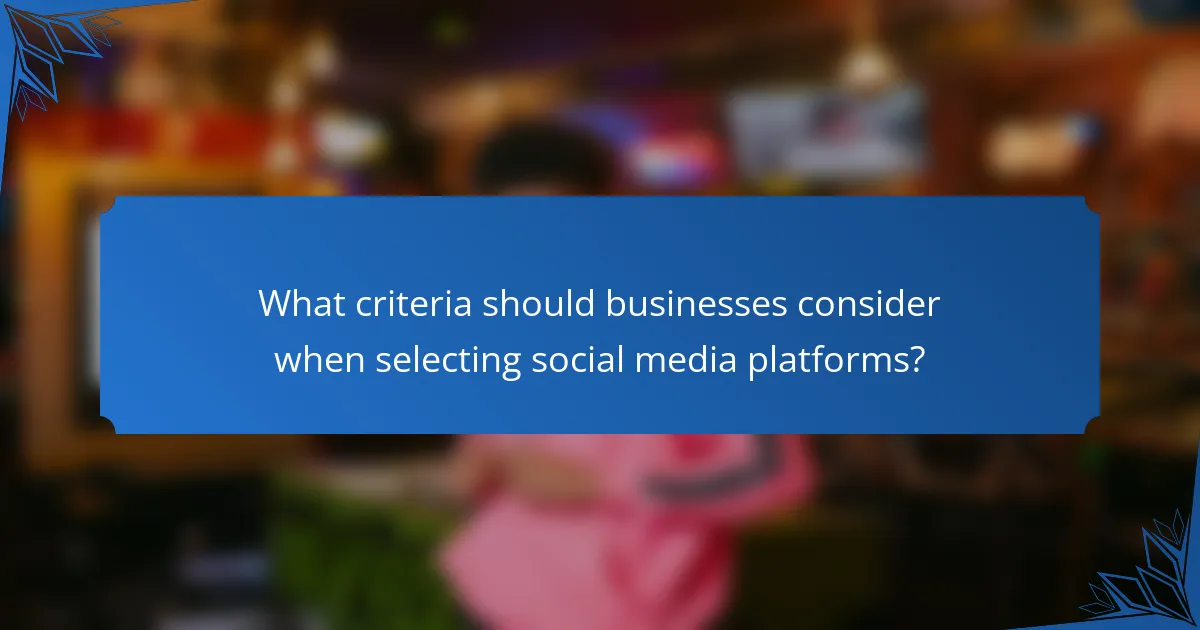
What criteria should businesses consider when selecting social media platforms?
Businesses should consider their target audience, the types of content they plan to share, and the unique features of each platform when selecting social media channels. Understanding these criteria helps ensure effective engagement and maximizes content visibility.
Target audience demographics
Identifying the demographics of your target audience is crucial for selecting the right social media platforms. Different platforms attract distinct user groups based on age, gender, location, and interests. For instance, Instagram is popular among younger users, while Facebook has a broader age range.
Analyze your audience’s preferences to determine where they spend their time online. Use tools like surveys or analytics to gather insights about their social media habits. This data will guide you in choosing platforms that align with your business goals and audience engagement.
Content format compatibility
Each social media platform supports different content formats, which can significantly influence your choice. For example, platforms like TikTok and Instagram prioritize video content, while Twitter is more text-focused. Consider what type of content you excel at creating and how it fits with the platform’s strengths.
Evaluate the compatibility of your content with the platform’s features. If your business relies heavily on visual storytelling, platforms that support images and videos may be more effective. Additionally, ensure that you can adapt your content to meet the platform’s guidelines and user expectations.
